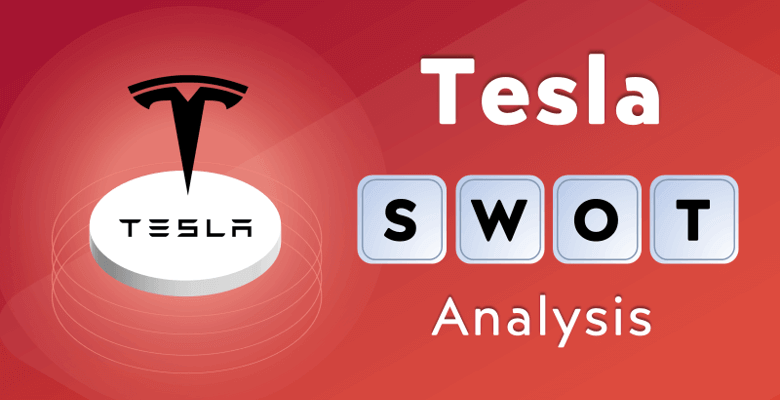
Tesla’s Roadmap to Success: A SWOT Analysis
In the fast-paced world of electric vehicles (EVs), Tesla Inc. has undoubtedly been a trailblazer. Founded by Elon Musk in 2003, the company’s visionary approach to sustainability and innovation has reshaped the automotive industry. Tesla’s relentless pursuit of excellence and its bold vision for the future have placed it at the forefront of the EV revolution. In this article, we will conduct a SWOT analysis of Tesla, examining its strengths, weaknesses, opportunities, and threats on its roadmap to success.
Strengths:
Technology Leadership: One of Tesla’s primary strengths lies in its technological prowess. The company has consistently been at the cutting edge of EV technology, from battery advancements to autonomous driving capabilities. Tesla’s focus on research and development has allowed it to create high-performing electric cars that outshine many of its competitors.
Brand Reputation: Tesla has established a strong and iconic brand image worldwide. The company is synonymous with innovation, sustainability, and forward-thinking. This positive reputation has resulted in a dedicated fan base and strong customer loyalty, leading to a continuous stream of pre-orders and reservations for its upcoming models.
Supercharger Network: Tesla’s investment in its Supercharger network is a significant advantage over other EV manufacturers. The extensive charging infrastructure enables Tesla owners to travel long distances with ease, reducing range anxiety and making EV ownership more practical and convenient.
First-Mover Advantage: Being an early entrant in the EV market has given Tesla a considerable first-mover advantage. By establishing itself before most other automakers seriously considered EVs, Tesla has been able to capture a significant market share and build a lead that remains challenging to match.
Innovation Culture: Tesla fosters an innovation-driven culture that encourages employees to think outside the box and challenge conventional norms. This emphasis on innovation has led to groundbreaking developments and has set the company apart from its competitors.
Weaknesses:
Production Challenges: Tesla has faced multiple production challenges in the past, resulting in delays in delivering vehicles to customers. These delays have led to frustration among some customers and potential buyers, tarnishing the company’s reputation for reliability.
High Production Costs: While Tesla has made significant progress in reducing production costs, manufacturing electric vehicles remains costlier than traditional gasoline-powered cars. This cost disadvantage may affect Tesla’s ability to compete in the lower-priced vehicle segments.
Dependence on Government Incentives: Tesla’s growth has been partly supported by government incentives and subsidies for electric vehicles. Changes in government policies could impact Tesla’s sales and profitability, especially in countries where these incentives are reduced or phased out.
Limited Model Range: Despite introducing several successful models, Tesla’s product line remains limited compared to traditional automakers. Diversifying the model range to cater to different market segments could be challenging for the company.
Competition Intensification: As the EV market gains momentum, competition in the space is increasing rapidly. Established automakers and new entrants are investing heavily in EV technology, posing a threat to Tesla’s market share.
Opportunities:
Expanding Global Market: The global shift towards sustainability and eco-consciousness presents a significant opportunity for Tesla. As more countries encourage the adoption of EVs and implement stricter emissions regulations, Tesla can tap into new markets and expand its global presence.
Advancements in Battery Technology: Continued advancements in battery technology could help Tesla address its cost and range challenges. Breakthroughs in battery chemistry and production techniques may enable the company to offer more affordable models with longer ranges, making EVs even more appealing to a broader audience.
Autonomous Driving Dominance: Tesla’s commitment to developing autonomous driving capabilities could be a game-changer. If the company can achieve Level 4 or Level 5 autonomy, it would not only differentiate Tesla from its competitors but also open up new revenue streams in the form of robotaxi services.
Energy Storage Solutions: Tesla’s expertise in battery technology positions it to explore opportunities beyond electric vehicles. The development of energy storage solutions for homes, businesses, and the power grid could diversify Tesla’s revenue streams and enhance its market presence.
Vertical Integration: Tesla’s vertical integration strategy, encompassing everything from battery production to vehicle manufacturing, provides an opportunity to optimize costs, improve quality control, and reduce reliance on external suppliers.
Threats:
Increased Competition: As mentioned earlier, the EV market is becoming more competitive. Established automakers like Volkswagen, BMW, and General Motors are investing heavily in electric vehicles, posing a challenge to Tesla’s market dominance.
Supply Chain Vulnerabilities: Tesla’s reliance on a complex global supply chain for essential components, such as batteries and semiconductors, exposes the company to potential disruptions. Any supply chain issues could result in production delays and affect Tesla’s financial performance.
Regulatory Changes: Changes in government regulations and policies related to EVs and emissions could impact Tesla’s business operations and market demand. For example, increased import tariffs or stricter emission standards may affect Tesla’s sales in specific regions.
Economic Factors: Economic fluctuations and uncertainties, such as inflation, recession, or changes in consumer spending, could affect consumer willingness to invest in higher-priced electric vehicles.
Public Perception and Safety Concerns: Any incidents involving Tesla vehicles, especially those related to autonomous driving features, could negatively impact public perception and raise safety concerns, potentially affecting sales and reputation.
In conclusion, Tesla’s SWOT analysis highlights the company’s significant strengths, such as technology leadership, brand reputation, and an established Supercharger network. However, it also points out weaknesses, including production challenges and high costs. To continue its success, Tesla must capitalize on opportunities like the expanding global market and advancements in battery technology while addressing potential threats like increased competition and supply chain vulnerabilities. By leveraging its innovation-driven culture and maintaining a customer-centric approach, Tesla can navigate its roadmap to success in the ever-evolving world of electric vehicles.




